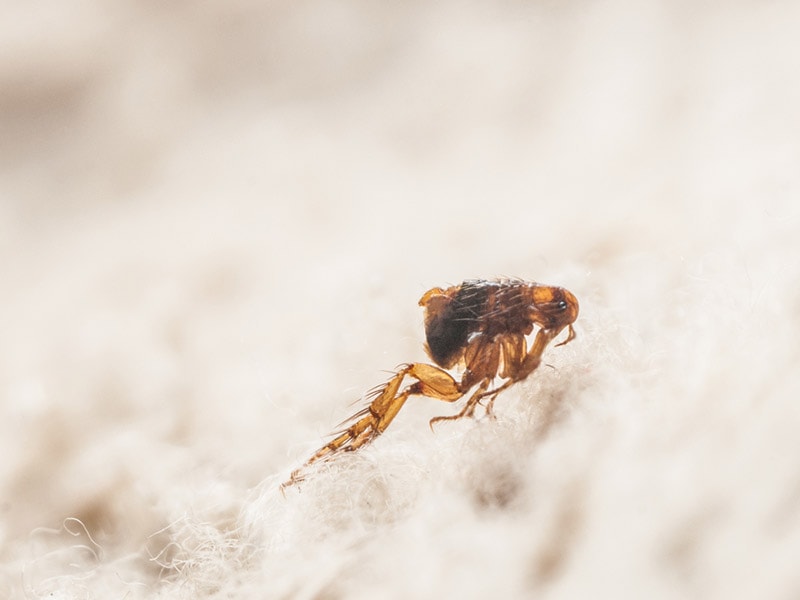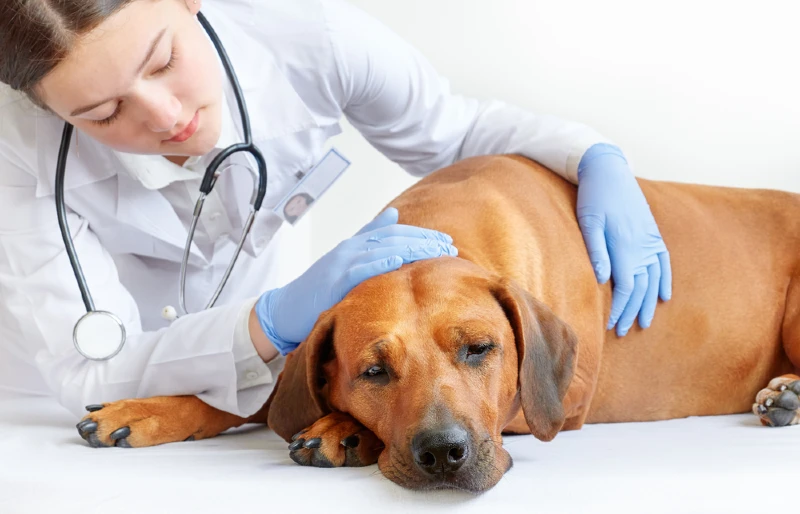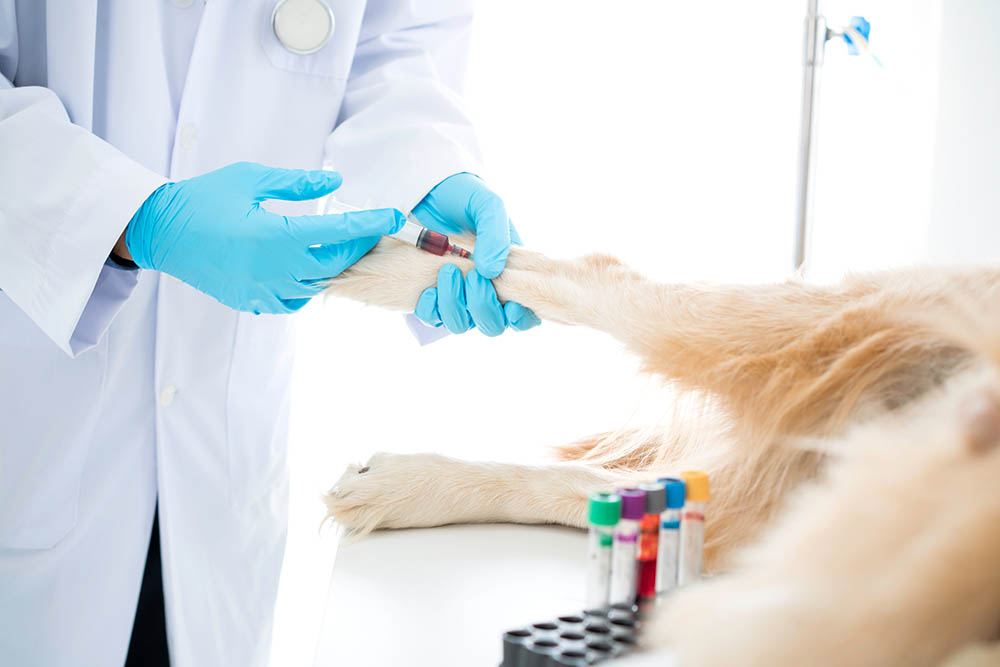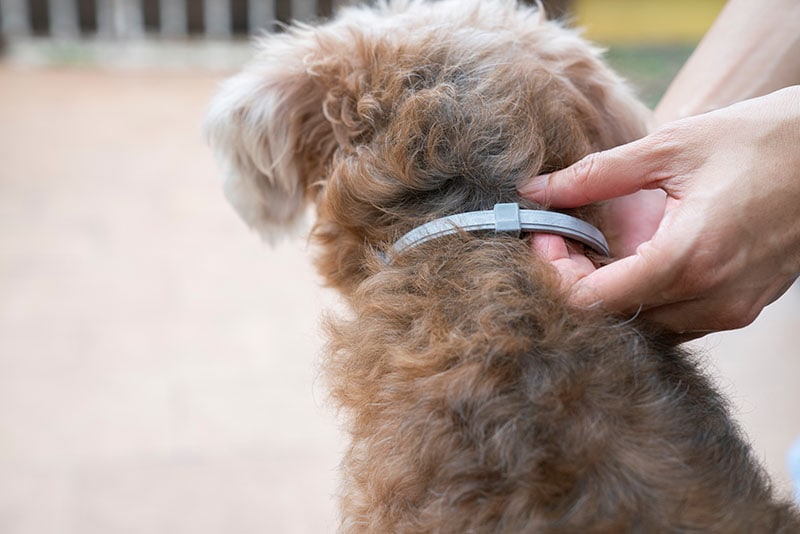Can Fleas Cause Anemia in Dogs? Vet-Reviewed Facts & Tips

Updated on

Click to Skip Ahead
As a responsible dog owner, you want to ensure that your pup is pest and disease free. This is why it’s important to take them for regular check-ups, feed them high-quality food, and keep them active with exercise and playtime. There is one health issue that is often found in dogs and should not be overlooked, as it can have serious consequences for your dog’s well-being – and that’s flea infestations. Fleas are more than just a nuisance; they can actually lead to anemia in some dogs. So, in this article, we’ll discuss the link between flea infestations and anemia in dogs.
What Is Anemia Exactly? How Does It Affect Dogs?
Anemia is an internal condition that is best defined as a lower than normal amount of healthy red blood cells. This can happen for several reasons, including flea infestations. Red blood cells contain hemoglobin, a protein that binds to oxygen and carries it to all parts of your dog’s body. It’s also responsible for carrying carbon dioxide away from the organs and back to the lungs, where it is exhaled. When there aren’t enough red blood cells, your dog’s body simply can’t get enough oxygen, which can lead to a range of signs, including weakness, lethargy, and pale gums (depending on the extent of the shortage).
Anemia can be caused by many factors, including blood loss, chronic renal issues, nutritional deficiencies, and underlying medical conditions. In some cases, flea infestations are a cause of anemia in dogs. This is especially true for young puppies, smaller dogs with heavy infestations, immunocompromised individuals, or very ill or emaciated individuals. When fleas bite your dog, they feed on their blood. While one or two flea bites may not seem like a big deal, a severe flea infestation can cause an at-risk dog to lose more amounts of blood, leading to anemia.

Flea Infestations and Dog Anemia
Flea infestations can lead to anemia in dogs in several ways. Firstly, the bites themselves can cause blood loss. When fleas bite your dog, they pierce the skin and feed on their blood. This can cause your dog to lose small amounts of blood with each bite. While this may not seem like a lot, a severe flea infestation can lead to hundreds of bites a day, which can add up to a substantial blood loss in some cases. And fleas can also transmit diseases that can be detrimental for your dog. For example, they can transmit tapeworms, which reside in your dog’s small intestine and feed off the nutrients your dog consumes, depriving your dog of nutrition. Lack of important nutrients needed for the synthesis of blood cells (such as iron) may contribute to anemia in the long run.
Signs of Flea-Induced Anemia in Dogs
The signs of flea-induced anemia can vary depending on the severity of the condition. The constant itching and scratching caused by flea bites can cause skin irritation and inflammation in dogs that are allergic to saliva – this condition is known as flea allergy dermatitis. This can lead to secondary bacterial or viral infections.
In most healthy dogs though, the odds of flea bites causing anemia is relatively low, especially because their bodies often respond to the loss of blood by expediting the release of new blood cells from their bone marrow. In severe cases, your dog may appear tired and lethargic. They may also have pale gums. In exceptionally rare cases, your dog may become weak and unsteady on their feet. Your dog may also lose their appetite and have difficulty breathing. In these rare instances, flea-induced anemia can be life-threatening.
If you notice any of these signs in your dog (or if you think your dog has fleas or other parasites), be sure to take them to the vet as soon as possible. Your vet can perform a physical examination on your dog to check for the presence of fleas. They may also run additional tests (such as a blood test) if your dog is showing other signs of a generalized systemic issue.

Diagnosis & Treatment of Flea-Induced Anemia in Dogs
If your vet suspects that your dog has flea-induced anemia, they may perform a blood test to confirm the diagnosis. This is also done to rule out other possible causes of anemia. And once the diagnosis is confirmed, they’ll usually recommend a prescription to address the underlying flea infestation and to replenish your dog’s red blood cell count.
The first step in treating flea-induced anemia is to get rid of the fleas. Your vet may recommend a flea preventative, such as a topical medication or oral medication. They may also recommend treating your home and yard to eliminate any flea eggs or larvae that may be present – this may include your dog’s bed and other areas where they spend a lot of time. In addition to treating the flea infestation, your vet may also recommend a blood transfusion to replace your dog’s lost red blood cells if it’s significantly low. This can be a life-saving treatment for dogs with severe anemia.
The 3 Ways for Preventing Flea Infestations in Dogs
Fortunately, there are several steps you can take to prevent flea infestations from occurring in the first place. Let’s take a look at the most common ways to prevent them.
1. Get Regular Treatments
The first step in preventing flea infestations is to ensure that your dog is receiving regular flea treatments. There are several different types of flea treatments available, including topical treatments, oral medications, and collars. Talk to your veterinarian about which option is best for your pet. It’s important to follow the instructions carefully and apply the treatment on a regular schedule to ensure maximum effectiveness.

2. Keep Your Dog Groomed
Regular grooming is essential, as it helps remove any fleas or eggs that may be present on your pet’s fur. This includes brushing and combing your dog’s coat regularly, as well as bathing them with a flea shampoo. Be sure to dry your dog thoroughly after their bath, as fleas thrive in moist environments.
It’s super important to be vigilant about checking your dog for fleas regularly – especially if your dog spends a significant amount of time outdoors. If you notice any signs of fleas, such as scratching or biting at their skin or the presence of small black dots (aka “flea dirt”) on their coat, take action immediately. The earlier you catch a flea infestation, the easier it’ll usually be to treat.
3. Keep a Clean House
Another key factor in preventing flea infestations is keeping your home clean and tidy. Fleas can live in carpets, bedding, and furniture, so it’s important to vacuum regularly and wash your dog’s bedding frequently. You may also want to consider using a flea spray or powder to treat your home if you’ve had a flea infestation in the past. In most infestations, adult fleas only comprise about 5% of the total population of fleas. The overwhelming majority of the population is eggs and young fleas, which can be found around the house (and on your pup too – the eggs resemble salt grains). It is important to make sure environmental cleanings are an important part of your flea prevention program.

Wrapping Things Up
Flea infestations can lead to serious health issues in young, immunocompromised, or weak dogs, including flea-induced anemia. It’s important to take steps to prevent flea infestations and to seek treatment promptly if you suspect that your dog has anemia. By using flea prevention products, regularly grooming your dog, and keeping your home and yard clean, you can help prevent flea infestations. Remember, prevention is key when it comes to keeping your dog from suffering negative effects of a flea infestation, such as anemia.
Featured Image Credit: Mi St, Shutterstock












